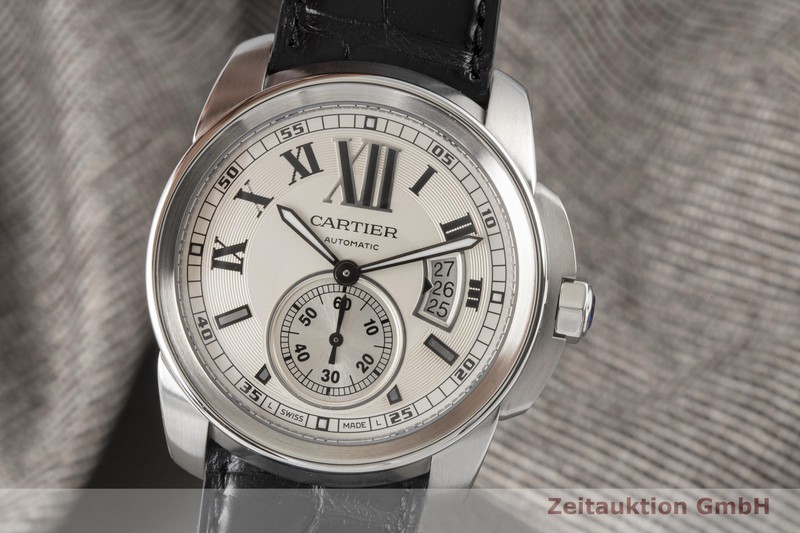
These were also made available in a myriad of case metals and straps and bracelets, with the addition of a diamond bezel in some variations. The Diver models featured a rotating ceramic bezel that could be used for measuring immersion times and a 300-meter water-resistance rating.Ģ015 saw the introduction of the smaller Calibre de Cartier 38, featuring a modified dial layout: a singular date window, blue hands, and all the hour markers being Roman numerals.
Cartier calibre 1904 price iso#
While the Diver models look similar to the earlier models, they were created to be ISO 6425 certified, with additional features necessary for diving. The Diver collection was introduced a year after, in 2013. Two years after the line’s first introduction to the market, chronograph models were added to the lineup. Both the front and back of the watch feature a sapphire crystal, displaying the intricate movements that power it. As a departure from typical Cartier design, the Calibre de Cartier line features both stylized Roman numerals and batons as hour markers, an expanded date window, and a seconds sub dial.

Because of the larger case size, watches from this line are seen to be of a sportier look than usual, but is filled with Cartier’s signature elements like sword-shaped hands, and a winding crown featuring a blue synthetic spinel.

Introduced in 2010, the inaugural Calibre de Cartier featured 42mm steel and rose gold cases with an assortment of straps and bracelets that range from exotic leathers to solid rose gold. In 1904, the third generation Cartier developed a modern wristwatch for the pilot Alberto Santos-Dumont – a friend who needed a timepiece that he could read while flying a plane. MC stands for "Manufacture Cartier", while 1904 is an ode to Louis Cartier’s pioneering spirit. The 1904-CH MC was the first in-house automatic movement made by Cartier. To be able to cater to a wider audience, Cartier introduced the Calibre de Cartier line, a better-priced collection featuring the 1904-CH MC movement. Given that the Ballon Bleu Flying Tourbillon was a Geneva Seal watch, it also carried a prohibitive price tag, pushing it well into the haute horology category. That changed with the introduction of the Ballon Bleu Flying Tourbillon, the maison’s first watch to earn the Geneva Seal, and the first to feature the 9452 MC caliber - their declaration of readiness to create their own movements. Historically, Cartier was not known for creating movements in-house. The beginnings of the Calibre de Cartier can be traced back to the creation of the first Cartier in-house movements in 2008.

Explore our selection of Calibre de Cartier watches at. While it was discontinued in 2018, the Calibre de Cartier, as well as its Chronograph, Diver, and Tourbillon sub-collections, continue to be sought after in the pre-owned market. This paved the way for Cartier to not just establish its identity as a manufacturer of its own movements, but also as a key player in the sports watch genre. Introduced in 2010, the Calibre de Cartier marked two notable firsts for the French maison: it is the first watch equipped with an automatic mechanical movement crafted entirely in-house at the Cartier workshop in Switzerland and it is also the first caliber in the company’s history to be designed specifically for the men’s sports watch market. Aside from its bold take on signature Cartier elements, the special feature among Calibre de Cartier watches lies within their interior: without exception, they are equipped with Cartier movements produced completely in-house. The Calibre de Cartier is a sporty and robust reinterpretation of the classic round watch.


 0 kommentar(er)
0 kommentar(er)
